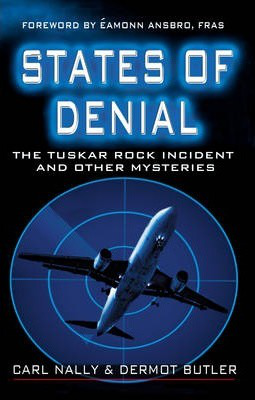The Mysterious Case of Nome, Alaska
Disappearance
Tuesday 15th, March 2022
5 minute read.
The Alaska Triangle rivals any other 'triangle' in the world like for example the Bermuda Triangle. In the Alaska Triangle which connects from Anchorage to Juneau in the south to Utqiagvik (formally known as Barrow) along the north coast.
Within the Alaska Triangle you have some of the most rugged, unforgiving terrain in North America, just plain difficult wilderness.
With any wilderness or mountainous terrain there seems to always be a couple of disappearances, some are found alive and well, others are not so fortunate and in some cases will be few years later if they're found at all.
But when it comes to Alaska's triangle the surprising thing is the sheer number of people that go missing, most never to be found again, no traces or clues, it's as if they we're just plucked up from the spot they were in and then they were gone.
Based on the numbers, this is why the Alaska Triangle seems to be one of the stranger triangles in the world. Since 1988 more than 16,000 people have gone missing in the Alaska Triangle, this works out as roughly four people for every 1,000 people in Alaska, which it turns out is more than twice the national average in the region of the world.
The Alaskan Triangle first came onto the wider radar of people in 1972 when an airplane carrying the U.S. House Majority Leader, Hale Boggs, disappeared. The disappearance of the aircraft sparked a huge search and rescue response, with 40 military aircraft and 50 civilian aircraft over a 39 day period they searched 32,000 square miles.
No debris, wreckage or human remains were ever found.
There are many theories as to these disappearances, a good example of a down to earth explanation was the disappearance of a British South American Airways (BSAA) flight in 1947, the plane a Lancastrian 3 aircraft disappeared on the way from Buenos Aires, Argentina to Santiago, Chile.
Fast forward 50 years, the wreckage was found by two Argentinian climbers on their way up Mount Tupungato in 1988. It was concluded that the aircraft had likely hit a vertical glacier which caused an avalanche that buried the aircraft within minutes of the impact.
If we look at Nome, a remote Alaskan town. In the early 1990's it was found that up to 30 residents of Nome's population have vanished, that's out of a population of nearly four thousand, never to be seen again, with no traces or clues as to where or what might have happened them.
In 2009, Nome became involved in a public controversy with Universal Studios with regard to a marketing campaign relating to the movie, 'The Fourth Kind'. The movie suggests that the disappearances in Nome are associated to UFOs and the movie marketing campaign involved publishing fictional abduction cases on the internet to garner interest in the upcoming movie release.
Universal Studio's eventually released a statement clarifying that the cases featured in their online marketing campaign were pure fiction and Universal Studios in turn donated money to the local community of Nome as a way of apology.
Even with the public spat between Universal Studios and Nome residents there are many reported UFO cases in Nome and the larger Alaskan area.
One case that confuses people to this day is the case of Chuck Palmer.
On the 4th of June 1999, fifteen year old Michael Palmer was on his way home, cycling from a party with two other friends, on the way home Michael fell behind his two friends. Michael's friends stopped to wait for him, eventually they proceed back for Michael as he still had not caught up but they were unable to find any trace of Michael. Michael's pedal cycle was found near the Little Susitna river the next day and his shoes were found in open ground next to a nearby airfield.
Moving on eleven years later Michael Palmer's older brother, Chuck Palmer was with a few friends riding snow mobiles to a cabin near the town of Talkeetna. In a oddly similar circumstances Chuck started to fall behind the group and was separated. Eventually the rest of the group returned to find Chuck but were unable to locate him.
Local authorities were notified of a missing male and an aerial search was initiated, Chuck's snow mobile was found on it's own in an open area of snow but the very strange thing about Chuck's snow mobile is that there was no disturbance of any of snow around the snow mobile, just a fresh blanket of snow. It was as if Chuck had been plucked straight up out of the snow mobile and the snow mobile was left to come to a stop on it's own.
There are many plausible held beliefs that the disappearances are down to a couple of power hungry law enforcement officers or that a serial killer lives among Nome's relatively small population.
The disappearances over the years have left a dark cloud over the remote little town on the fringes of Alaska.
Within the Alaska Triangle you have some of the most rugged, unforgiving terrain in North America, just plain difficult wilderness.
With any wilderness or mountainous terrain there seems to always be a couple of disappearances, some are found alive and well, others are not so fortunate and in some cases will be few years later if they're found at all.
But when it comes to Alaska's triangle the surprising thing is the sheer number of people that go missing, most never to be found again, no traces or clues, it's as if they we're just plucked up from the spot they were in and then they were gone.
Based on the numbers, this is why the Alaska Triangle seems to be one of the stranger triangles in the world. Since 1988 more than 16,000 people have gone missing in the Alaska Triangle, this works out as roughly four people for every 1,000 people in Alaska, which it turns out is more than twice the national average in the region of the world.
The Alaskan Triangle first came onto the wider radar of people in 1972 when an airplane carrying the U.S. House Majority Leader, Hale Boggs, disappeared. The disappearance of the aircraft sparked a huge search and rescue response, with 40 military aircraft and 50 civilian aircraft over a 39 day period they searched 32,000 square miles.
No debris, wreckage or human remains were ever found.
There are many theories as to these disappearances, a good example of a down to earth explanation was the disappearance of a British South American Airways (BSAA) flight in 1947, the plane a Lancastrian 3 aircraft disappeared on the way from Buenos Aires, Argentina to Santiago, Chile.
Fast forward 50 years, the wreckage was found by two Argentinian climbers on their way up Mount Tupungato in 1988. It was concluded that the aircraft had likely hit a vertical glacier which caused an avalanche that buried the aircraft within minutes of the impact.
If we look at Nome, a remote Alaskan town. In the early 1990's it was found that up to 30 residents of Nome's population have vanished, that's out of a population of nearly four thousand, never to be seen again, with no traces or clues as to where or what might have happened them.
In 2009, Nome became involved in a public controversy with Universal Studios with regard to a marketing campaign relating to the movie, 'The Fourth Kind'. The movie suggests that the disappearances in Nome are associated to UFOs and the movie marketing campaign involved publishing fictional abduction cases on the internet to garner interest in the upcoming movie release.
Universal Studio's eventually released a statement clarifying that the cases featured in their online marketing campaign were pure fiction and Universal Studios in turn donated money to the local community of Nome as a way of apology.
Even with the public spat between Universal Studios and Nome residents there are many reported UFO cases in Nome and the larger Alaskan area.
One case that confuses people to this day is the case of Chuck Palmer.
On the 4th of June 1999, fifteen year old Michael Palmer was on his way home, cycling from a party with two other friends, on the way home Michael fell behind his two friends. Michael's friends stopped to wait for him, eventually they proceed back for Michael as he still had not caught up but they were unable to find any trace of Michael. Michael's pedal cycle was found near the Little Susitna river the next day and his shoes were found in open ground next to a nearby airfield.
Moving on eleven years later Michael Palmer's older brother, Chuck Palmer was with a few friends riding snow mobiles to a cabin near the town of Talkeetna. In a oddly similar circumstances Chuck started to fall behind the group and was separated. Eventually the rest of the group returned to find Chuck but were unable to locate him.
Local authorities were notified of a missing male and an aerial search was initiated, Chuck's snow mobile was found on it's own in an open area of snow but the very strange thing about Chuck's snow mobile is that there was no disturbance of any of snow around the snow mobile, just a fresh blanket of snow. It was as if Chuck had been plucked straight up out of the snow mobile and the snow mobile was left to come to a stop on it's own.
There are many plausible held beliefs that the disappearances are down to a couple of power hungry law enforcement officers or that a serial killer lives among Nome's relatively small population.
The disappearances over the years have left a dark cloud over the remote little town on the fringes of Alaska.



